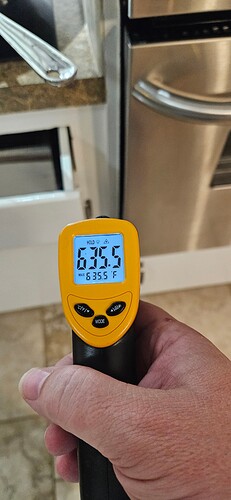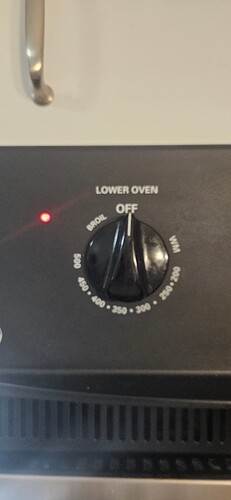Well, this was actually a little scary.
We’ve all done it, throw something in the oven (in this case, a baked potato), leave it there while worrying about other things in life. Nice smooth 350F, no rush, life is good.
Then I noticed a burning smell coming from the kitchen. “wtf”, went to investigate. Some burnt food smoke coming from the oven and it felt hot to touch. “wtf??”. Opened and lots of smoke came out and the heater elements were glowing red hot. Turned the oven down, but it didn’t react to the knob. Even at “Off”, the “Oven on”-indicator light was still on and the elements were clearly at full blast.
Went and pulled the circuit breaker to get the oven off. Came back, ventilation, the usual stuff, and I thought hmm wtf happened and how hot was it.
This was the inside wall temperature in the oven about 5 minutes after turning it off.
And here’s “Oven off”, when it still was on.
Anyway, to make it “epicurean”, this also broke my personal best of carryover cooking. When this happened, the baked potato internal temp (yes I use a thermometer for potatoes) was 135F. I pulled it, the skin (well, the blackened shell) was almost 500F. I expected the potato to be ruined and I would have to eat my Flannery Ribeye by itself.
About 30 minutes later the potato internal temp was 202F and it actually turned out great! It was actually one of the better baked potatoes I’ve done. Nice smoky char and soft and cooked all the way through.
Now time to find a new oven that is not a GE. This could have been a lot worse. I’m glad I didn’t have anything with olive oil for example in there, as I would likely be making a totally different kind of a post right now.

